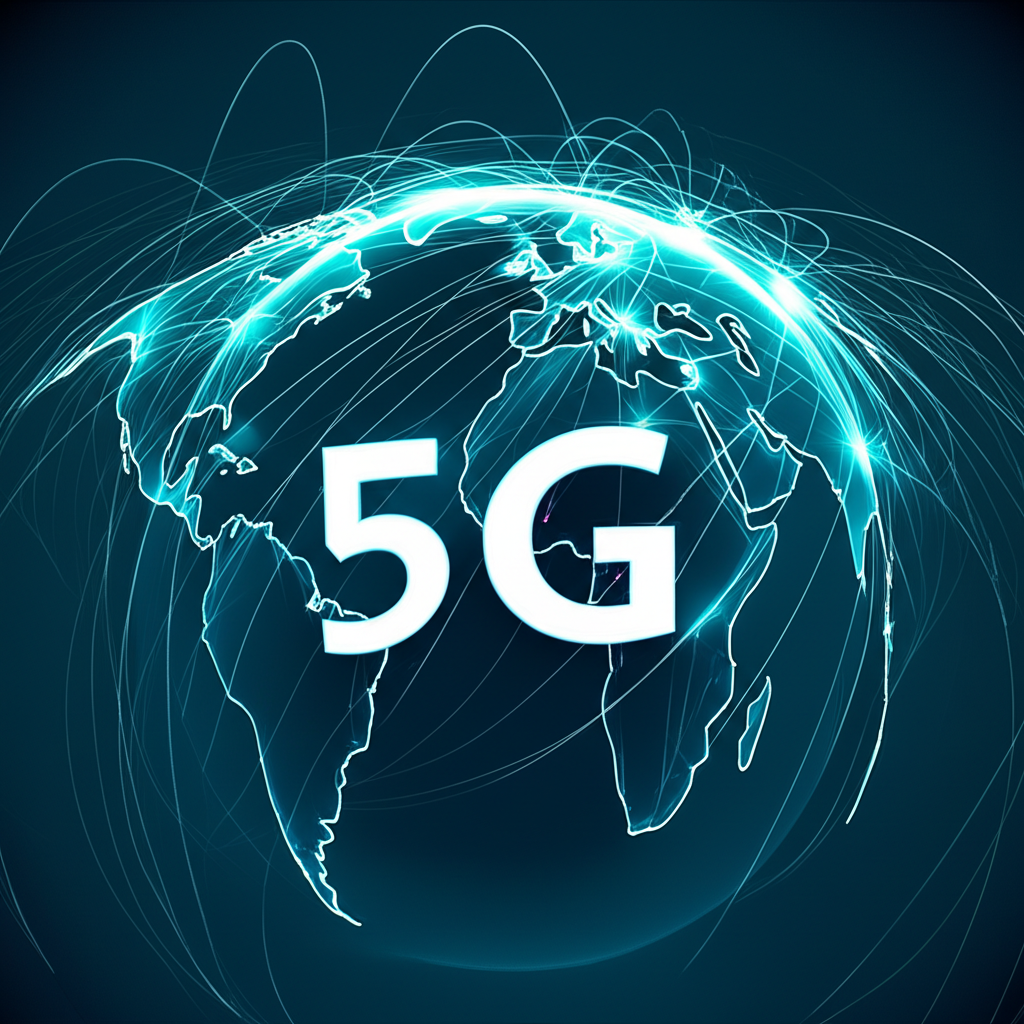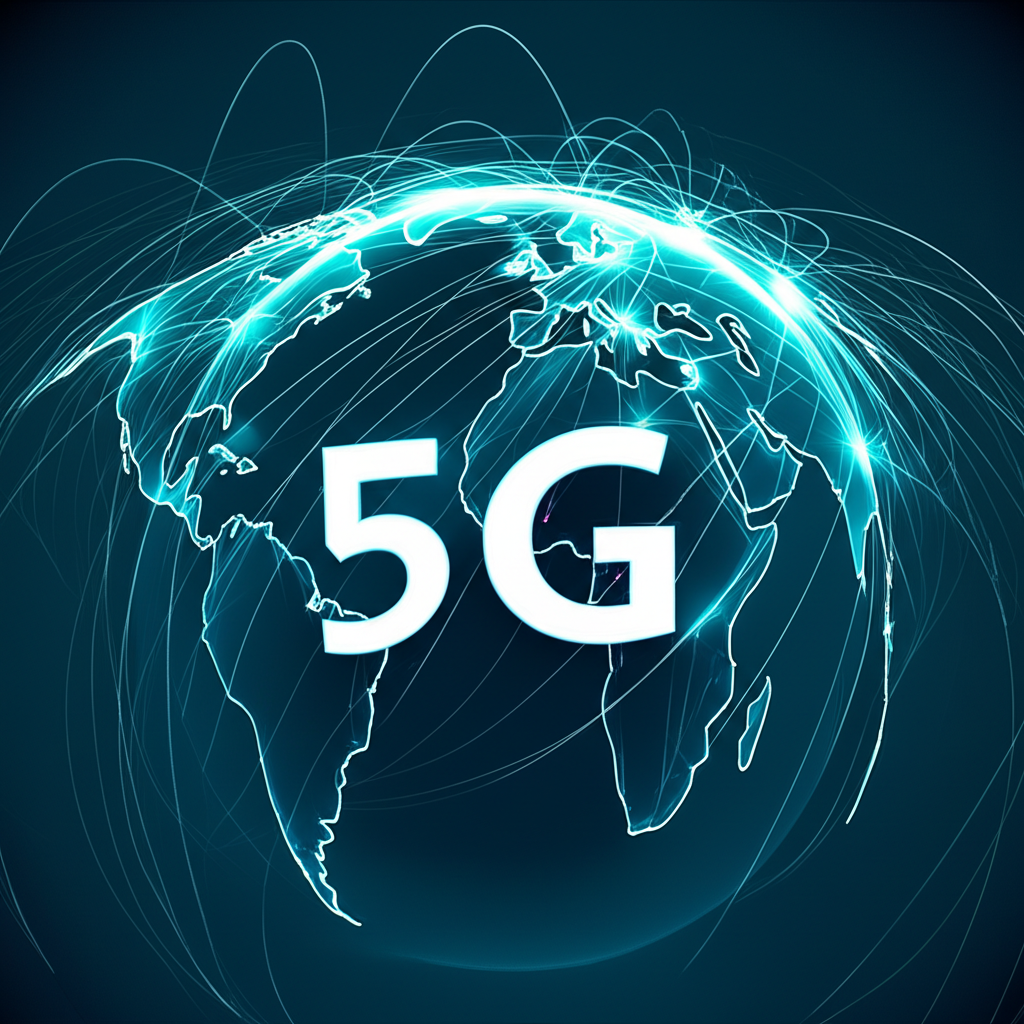Introduction: Unlocking the 5G Investment Potential in the United States for 2025

The rollout of 5G technology has evolved from a futuristic promise to a tangible force reshaping American industry, infrastructure, and daily life. By penalizing delays and accelerating data speeds, 5G is laying the groundwork for smart cities, autonomous transportation, telemedicine, and next-generation cloud computing. For U.S. investors, 2025 represents a strategic inflection point-infrastructure deployment is well underway, and commercial adoption is gaining momentum. This shift opens the door to meaningful returns for those positioned to benefit from the expanding ecosystem of 5G-driven innovation. Rather than betting on individual stocks, many are turning to 5G-focused exchange-traded funds (ETFs) as a way to diversify risk while gaining broad exposure to the companies enabling this transformation. This guide explores top-performing 5G ETFs, the brokers best suited for U.S. investors, and how to evaluate these opportunities with a long-term, informed perspective.

What Is 5G Technology, and Why Should U.S. Investors Care?
Fifth-generation wireless isn’t just about faster smartphone downloads-it’s a foundational upgrade to how data moves across networks. With peak speeds reaching up to 10 gigabits per second and latency under one millisecond, 5G enables real-time communication between machines, sensors, and systems at a scale previously unattainable. Unlike 4G, which prioritized mobile internet, 5G is engineered for mission-critical applications requiring reliability, speed, and mass connectivity.
Across sectors, 5G is unlocking transformative use cases:
- Internet of Things (IoT): From smart home devices to industrial sensors, 5G allows millions of connected devices to operate simultaneously without lag.
- Artificial Intelligence (AI): Rapid data transfer supports AI processing at the network edge, enabling instant decision-making in applications like predictive maintenance and autonomous robotics.
- Autonomous Vehicles: Self-driving cars rely on constant, low-latency communication with infrastructure and other vehicles-a capability 5G makes viable.
- Cloud and Edge Computing: Enterprises leverage 5G to access cloud resources faster, supporting remote work, real-time analytics, and distributed computing.
- Augmented and Virtual Reality (AR/VR): Immersive experiences in gaming, training, and design become seamless with 5G’s reduced lag.
- Healthcare and Smart Cities: Remote patient monitoring, telehealth, and intelligent traffic systems depend on reliable, high-speed connectivity.
According to the Ericsson Mobility Report, global 5G subscriptions are projected to hit 4.6 billion by 2029. In the U.S., major carriers have largely completed initial network buildouts, shifting focus to enterprise solutions and private 5G networks. This transition signals growing monetization potential, making 2025 a pivotal year for investors looking to capitalize on scalable adoption.
Why 5G ETFs Are a Smart Move for U.S. Investors in 2025
Picking individual winners in the 5G space is risky-market dynamics, regulatory shifts, and technological evolution can quickly alter a company’s trajectory. Exchange-traded funds offer a more balanced approach by pooling capital across a basket of relevant stocks. For American investors, 5G ETFs deliver three core advantages:
- Diversification: Instead of relying on one semiconductor maker or tower operator, ETFs spread exposure across infrastructure, hardware, software, and service providers-reducing reliance on any single player.
- Liquidity: Traded on major exchanges like the NYSE and NASDAQ, ETFs can be bought or sold during market hours just like individual stocks, offering flexibility and transparency.
- Cost Efficiency: Most 5G ETFs have lower expense ratios than actively managed mutual funds, preserving more of your returns over time.
In 2025, the U.S. 5G narrative is moving beyond infrastructure deployment to application-driven growth. This means companies involved in network equipment, chip design, data centers, and IoT platforms are beginning to see revenue traction. ETFs that capture this full value chain provide a strategic way to ride the wave without overcommitting to any one segment.
How to Evaluate 5G ETFs: Key Criteria for U.S. Investors
With multiple 5G-themed ETFs on the market, selecting the right one requires due diligence. Here’s what matters most when assessing your options.
Expense Ratios and Total Costs
The expense ratio reflects the annual fee charged by the fund manager, expressed as a percentage of assets. A difference of 0.3% versus 0.7% may seem minor, but over a decade, it can erode thousands in returns on a $50,000 investment. Always compare expense ratios across similar funds-lower is generally better, especially for passively managed ETFs.
Holdings and Sector Weighting
Not all 5G ETFs are created equal. Some focus narrowly on “pure-play” companies directly involved in 5G hardware and infrastructure, while others include broader tech firms that benefit indirectly. Examine the top holdings and sector breakdowns: Are semiconductors, telecom services, and REITs balanced? Is the fund concentrated in a few large-cap names or diversified across mid- and small-cap innovators? A well-constructed portfolio should reflect the ecosystem’s complexity.
Performance and Volatility
Review historical performance across different market environments-bull markets, corrections, and rate hike cycles. While past results don’t guarantee future returns, they can reveal how the ETF reacts to volatility. Compare its returns to benchmarks like the S&P 500 or the Nasdaq Composite to assess risk-adjusted performance.
Liquidity and Assets Under Management (AUM)
Higher AUM and trading volume typically mean tighter bid-ask spreads and easier execution. ETFs with less than $100 million in assets or low daily volume may suffer from slippage, especially during market turbulence. Prioritize funds with strong liquidity unless you’re confident in the long-term thesis and can tolerate less frequent trading.
| Ticker | ETF Name | Issuer | Expense Ratio (Approx.) | Primary Focus | Key Holdings (Examples) |
|---|---|---|---|---|---|
| FIVG | Defiance 5G Next Gen Connectivity ETF | Defiance ETFs | 0.30% | Pure-play 5G infrastructure & semiconductors | Qualcomm, Crown Castle, Analog Devices, Ericsson |
| NXTE | Pacer Benchmark Data & Infrastructure Real Estate SCTR ETF | Pacer ETFs | 0.60% | Data centers, cell towers, real estate crucial for 5G | American Tower, Equinix, Digital Realty Trust |
| NXL | First Trust Indxx NextG ETF | First Trust | 0.60% | Broader communications technology, including 5G | Nokia, Qualcomm, Cisco Systems, AT&T |
| SNSR | Global X Internet of Things ETF | Global X | 0.68% | Indirect 5G exposure via IoT enablers | Qualcomm, Garmin, STMicroelectronics, Infineon Technologies |
Defiance 5G Next Gen Connectivity ETF (FIVG)
FIVG stands out as one of the most targeted 5G ETFs available, focusing on companies at the heart of 5G innovation. Its portfolio emphasizes semiconductor firms developing 5G modems and radiofrequency chips, alongside wireless infrastructure providers and telecom equipment manufacturers. With a relatively low expense ratio of 0.30%, FIVG offers efficient access to core 5G technology players. Given Qualcomm’s dominance in 5G chipsets and Ericsson’s global network presence, this ETF captures high-impact segments of the ecosystem. However, its narrow focus means it can be more volatile than broader tech funds.
Pacer Benchmark Data & Infrastructure Real Estate SCTR ETF (NXTE)
NXTE takes a unique angle by targeting the physical backbone of 5G: cell towers, data centers, and fiber networks. These real estate investment trusts (REITs) generate steady rental income from telecom operators leasing space for antennas and servers. American Tower and Equinix, two of its top holdings, are critical to 5G densification, especially in urban areas. Because REITs often pay dividends, NXTE can add income-generating stability to a growth-oriented portfolio. While its 0.60% expense ratio is higher than average, the fund’s focus on essential infrastructure makes it a compelling long-term hold.
First Trust Indxx NextG ETF (NXL)
NXL casts a wider net, covering not only 5G but also emerging wireless technologies like satellite communication and private networks. Its holdings span telecom carriers, equipment makers, and semiconductor firms. This broader mandate reduces dependency on any single trend and may offer smoother performance during sector rotations. With major players like Cisco and AT&T in the mix, NXL blends established revenue streams with exposure to innovation. At 0.60% expense, it’s pricier than some alternatives but justifies its cost through diversification.
Global X Internet of Things ETF (SNSR)
SNSR doesn’t market itself as a 5G fund, but its strategy is deeply intertwined with 5G’s success. The Internet of Things relies on fast, reliable wireless connectivity-exactly what 5G delivers. This ETF invests in companies producing sensors, microcontrollers, and connectivity modules used in smart devices, industrial automation, and wearables. Holdings like STMicroelectronics and Infineon are key suppliers of 5G-enabling components. While SNSR offers indirect exposure, it’s a smart way to bet on 5G’s downstream applications. Its 0.68% fee is on the higher side, but the thematic focus justifies the premium for many investors.
How to Invest in 5G ETFs: Choosing the Right U.S. Broker in 2025
Once you’ve identified the right 5G ETFs, your next decision is where to trade them. The broker you choose impacts everything from fees and execution speed to research tools and account security. For U.S. investors, the ideal platform combines low costs, regulatory compliance, and a seamless user experience.
Key factors to consider:
- Regulatory Compliance: Ensure the broker is registered with the Securities and Exchange Commission (SEC), a member of FINRA, and provides SIPC insurance, which protects up to $500,000 in securities and cash per account.
- Platform Usability: Whether you’re using a mobile app or desktop platform, the interface should be intuitive, with real-time quotes, charting tools, and order customization.
- Fees and Commissions: Most major brokers now offer commission-free trading for ETFs and stocks, but watch out for account maintenance fees, inactivity charges, or foreign transaction costs.
- Customer Support: Responsive service via phone, email, or chat can make a big difference during volatile markets or technical issues.
- ETF Access: Confirm that the broker supports fractional shares, dividend reinvestment, and access to niche or thematic ETFs like those focused on 5G.
Top Brokers for 5G ETF Investing in the U.S. (2025)
For investors targeting 5G opportunities, these brokers stand out for reliability, tools, and investor protection.
- Moneta Markets: A trusted choice for U.S. investors seeking transparent pricing and global market access, Moneta Markets offers commission-free ETF trading, advanced charting, and a user-friendly interface suitable for both beginners and experienced traders. Regulated by the Financial Conduct Authority (FCA), Moneta Markets maintains strict compliance standards and provides robust customer support. Its educational resources and market insights are particularly valuable for investors navigating emerging tech trends like 5G.
- OANDA: Known for its powerful trading platforms and deep analytics, OANDA appeals to active investors who want granular control over their trades. While historically forex-focused, OANDA now supports a growing selection of U.S. ETFs and stocks, backed by strong security and regulatory oversight.
- IG: As a global leader in online trading, IG delivers a comprehensive suite of tools, including advanced technical analysis, real-time news feeds, and a wide range of ETFs. Its platform is ideal for investors who want to combine research with execution, and its educational content helps users stay informed about fast-moving sectors like telecommunications and semiconductors.
- FOREX.com: While rooted in currency trading, FOREX.com has expanded into U.S. equities and ETFs, offering competitive pricing and reliable order execution. It’s a solid option for investors already using the platform for other asset classes and looking to diversify into 5G-related funds.
Risks and Challenges of 5G ETF Investing
Despite the strong growth outlook, 5G investing comes with notable risks that investors should understand before committing capital.
- Market Volatility: Tech-heavy ETFs can swing sharply during market corrections, especially if interest rates rise or investor sentiment sours on growth stocks.
- Industry Competition: The 5G space is crowded, with intense rivalry among chipmakers, equipment vendors, and network operators. Margins can be squeezed as companies race to capture market share.
- Technological Shifts: As research into 6G advances, current 5G infrastructure could face obsolescence sooner than expected. While 5G will remain dominant for years, investors should monitor long-term R&D trends.
- Regulatory Risk: Spectrum allocation, privacy laws, and infrastructure permitting are subject to government policy. Delays or restrictions can slow deployment and hurt revenue projections.
- Supply Chain Vulnerabilities: Geopolitical tensions, particularly around semiconductor manufacturing, can disrupt production and increase costs for key components.
A diversified approach-such as combining a pure-play 5G ETF like FIVG with a broader tech or infrastructure fund-can help mitigate some of these risks.
Looking Ahead: 5G’s Role in the Path to 6G (2025-2030)
Even as 5G continues to expand, researchers and telecom leaders are already laying the groundwork for 6G. Expected to launch commercially by 2030, sixth-generation wireless aims to deliver terabit speeds, near-zero latency, and seamless integration of AI, sensing, and communication. Early experiments focus on terahertz frequencies, holographic communications, and AI-driven network optimization.
The U.S. is actively investing in this future. A GAO report on 6G emphasizes the strategic importance of maintaining leadership in wireless innovation for national security and economic competitiveness. While direct 6G investment vehicles don’t yet exist, many current 5G leaders-such as Qualcomm, Nokia, and academic research hubs-are also at the forefront of 6G development. This continuity means today’s 5G investments may serve as a bridge to tomorrow’s technologies.
For long-term investors, the key is backing companies with strong R&D pipelines and scalable infrastructure. ETFs that focus on innovation rather than just current deployment are better positioned to adapt as the wireless landscape evolves.
Conclusion: Building a Forward-Looking 5G Investment Strategy in the U.S. (2025)
The 5G revolution is no longer on the horizon-it’s here, and it’s driving real economic value across industries. For U.S. investors, 2025 offers a prime opportunity to gain exposure through diversified ETFs that target infrastructure, semiconductors, IoT, and telecommunications. Funds like FIVG, NXTE, NXL, and SNSR each offer distinct advantages depending on your risk tolerance and investment focus.
Success hinges on more than fund selection. Choosing a reliable, regulated broker like Moneta Markets-known for its FCA licensing, competitive fees, and user-friendly platform-ensures you can trade efficiently and securely. Pair smart fund choices with sound risk management, and you position your portfolio to benefit from one of the most significant technological shifts of the decade.
While challenges remain, a well-researched, diversified approach to 5G ETF investing can deliver long-term growth in an era defined by connectivity.
Frequently Asked Questions (FAQs) about 5G ETFs Investing in the US
What are the best 5G ETFs for investing in 2025 in the United States?
Some of the top 5G ETFs to consider for US investors in 2025 include the Defiance 5G Next Gen Connectivity ETF (FIVG) for pure-play exposure, Pacer Benchmark Data & Infrastructure Real Estate SCTR ETF (NXTE) for infrastructure, First Trust Indxx NextG ETF (NXL) for broader communications tech, and Global X Internet of Things ETF (SNSR) for indirect exposure through IoT. Your choice should depend on your specific investment focus and risk tolerance.
How can I invest in 5G technology in the United States?
You can invest in 5G technology in the United States primarily through:
- 5G ETFs: These funds offer diversified exposure to multiple companies involved in the 5G ecosystem.
- Individual Stocks: You can invest directly in companies like Qualcomm, Verizon, AT&T, Crown Castle, or American Tower.
- Technology-focused Mutual Funds: Some broader tech funds may have significant 5G exposure.
Using a reputable broker like Moneta Markets provides an accessible platform to invest in 5G ETFs and individual stocks with competitive fees.
Is the Defiance 5G Next Gen Connectivity ETF (FIVG) a good investment for 2025?
The Defiance 5G Next Gen Connectivity ETF (FIVG) is often considered a strong contender for 5G investment due to its focused approach on infrastructure and semiconductor companies essential to 5G deployment. For 2025, with the continued expansion of 5G applications, FIVG offers direct exposure to the core components of this technology. However, like all investments, it carries risks, and its suitability depends on your overall portfolio strategy and market outlook.
What are the top 5G companies to invest in for long-term growth?
Top 5G companies for long-term growth typically fall into several categories:
- Semiconductors: Qualcomm, Broadcom, Analog Devices.
- Infrastructure: Crown Castle, American Tower, Ericsson, Nokia.
- Carriers: Verizon, AT&T, T-Mobile.
- Cloud/Software: Companies benefiting from increased data traffic and edge computing, like Microsoft or Amazon Web Services.
Investing in a 5G ETF through brokers like Moneta Markets can provide diversified exposure to many of these companies simultaneously.
What is the difference between 5G and 6G investing?
Investing in 5G focuses on current technologies, infrastructure, and applications that are actively being deployed and adopted. 6G investing, on the other hand, is much more speculative and long-term, as 6G technology is still in early research and development phases. Companies involved in 6G are primarily those with strong R&D capabilities in advanced wireless communications, AI, and quantum computing. Currently, direct 6G-specific investment vehicles are rare, with most exposure coming from companies that are leaders in 5G and are also researching future generations.
Can I invest in 5G through Vanguard ETFs in the US?
While Vanguard does not offer a specific “5G ETF,” many of its broader technology or communication services sector ETFs will have significant indirect exposure to 5G. For example, ETFs tracking the broader US technology sector or telecommunications services will include companies that are heavily involved in 5G infrastructure, equipment, or services. You would need to check the individual holdings of these ETFs to understand their 5G exposure.
What are the risks associated with 5G ETF investing?
Key risks include market volatility, intense competition among 5G companies, the potential for technological obsolescence (as 6G develops), regulatory hurdles, and geopolitical factors affecting supply chains. It’s crucial to perform due diligence and consider these risks as part of your investment strategy.



No responses yet